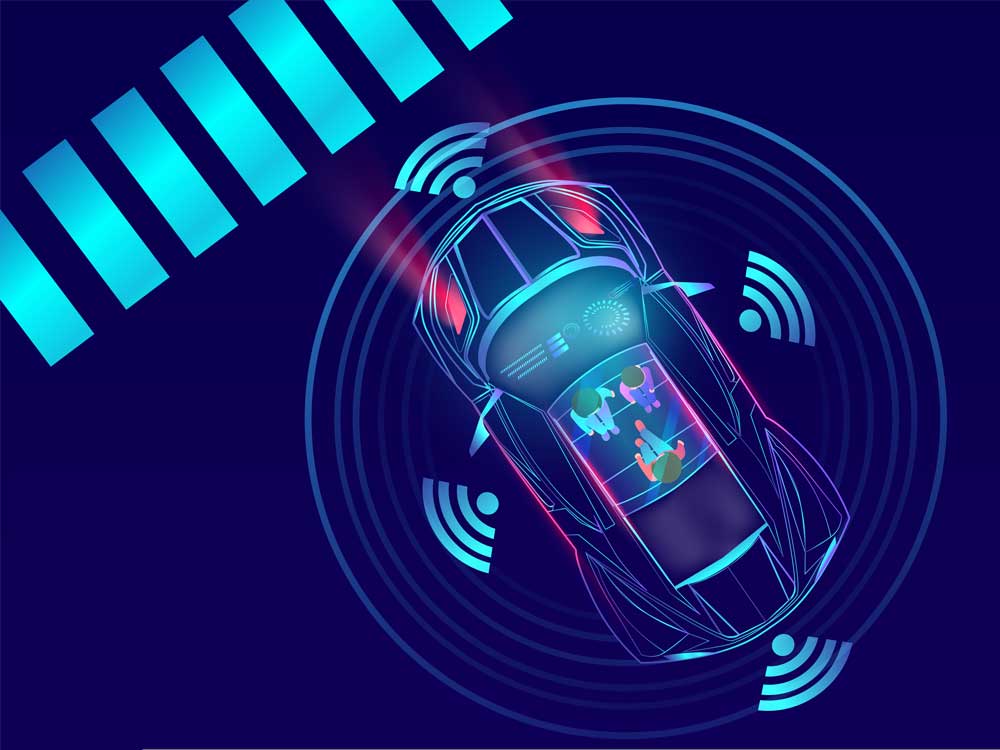Vehicle Autonomy and the Changing Landscape Between Automotive OEMs and Component Manufacturers
At this moment, the automotive industry is experiencing two substantial revolutions that are completely redefining the very concept of a vehicle. The first and perhaps most obvious movement is that after roughly a hundred years, fossil fuel burning internal combustion engines (ICEs) are being replaced with battery packs and electric motors. Simultaneously, we are seeing another sizable development — the emergence of automotive intelligence.

While the technical and social challenges involved with moving away from ICE powered vehicles should not be understated, in reality, from a development standpoint, less has changed than some would imagine. Customer names may change, technology and requirements are different, but the fundamentals of design do not really change, and value is largely added from components and physical design. For example, Murata supplies components to Tier 1 manufacturers which design solutions such as an Electronic Control Unit (ECU), to the specification required by an OEM’s application.
But changes relating to a vehicle’s autonomous functionality are more complex and in depth. The value of the vehicle is less in the hardware, whether this is performance components or the body style or interior quality, but it is instead driven more by the software. The capability of the vehicle, the range of advanced driver assistance systems (ADAS), is just as dependent on its software as it is on the hardware. This applies not just as a car leaves the showroom but also further into its life with Over-The-Air (OTA) updates capable of augmenting or increasing functionality.
Historically, the car manufacturers, or any of the supplying tiers, have received significant financial income at only one point during the lifespan of the vehicle – its initial sale. With the rapid advancement of technology in autonomous driving, vehicles are now designed to be easily updatable, generating revenue throughout the vehicle’s lifespan.
This has sparked a revolution in the automotive supply chain, as automotive OEMs are now looking to integrate deeper into the design of their vehicle systems and want to dictate solutions to the component level to ensure they obtain the desired functionality more deeply. Tier 1 companies are transforming into electronics manufacturing services (EMS), while traditional EMS companies are venturing into the “build to print” subcontracting market. Additionally, a new category of companies is entering the automotive market whose offerings solely revolve around providing advanced systems on chips (SoC). These SoCs serve as the “supercomputers” of future vehicles, and essentially determine the ultimate functionality of a car as well as upgrade limitations for the vehicle.
So how will this impact component manufacturers like Murata? It means that there will be new business interfaces. And by business interfaces, we mean companies that are not typically directly purchasing electronics components from manufacturers such as Murata but will now play a crucial role in the decision-making process.
One of the most prominent stakeholders is still the automotive OEM. Tesla is a well-known example of an OEM that designs its own components like ECUs and then outsources the manufacturing, and other OEMs are starting to follow suit.
For renowned brands like Mercedes or BMW, it is now impossible to differentiate themselves solely through economic, powerful, or quiet engines. Instead, they need to find new ways to justify their brand’s value and create new selling points that actively engage the customer base. In order to create a distinctive customer experience that is in line with their brand, OEMs are assuming a more prominent position in all areas of vehicle electronics, extending their design influence down to the component-level in order to extract the maximum value. Most modern OEMs do not want to be seen as a collection of “off-the-shelf” components on wheels. Their goal is to customize the experience to provide the utmost customer satisfaction not only at the time of purchase but also in the future. Hence, they require the flexibility to upgrade systems, which they consider crucial.
Key components which can make a difference, such as communication modules or intelligent sensors, are selected by the OEM, typically according to a recommendation of a SoC company. Although these new ecosystems are unfamiliar to companies like Murata, changes have already been made to ensure we are fully prepared to meet these challenges. The Business Development and Sales teams are collaborating alongside multiple Product Divisions to effectively engage with all stakeholders in the emerging ecosystems, ensuring our presence in supporting the expanding realm of intelligent and electrified vehicles of tomorrow.
Also, right at the forefront of autonomous vehicles is robotaxis. Although there have been some delays compared to optimistic projections, construction of robotaxis has resumed after a brief pause. In fact, the demand for Murata inertial sensors for next year have already exceeded the production volumes of Tesla’s initial Roadster model. While we don’t expect robotaxis to become the next Tesla within the upcoming 15 years, it is certainly showing promise. And while innovations like robotaxis will take time to become widespread, the market is now well under way.
In the upcoming blog entries, we will delve into a more comprehensive analysis of the different stakeholders within the new ecosystem.
